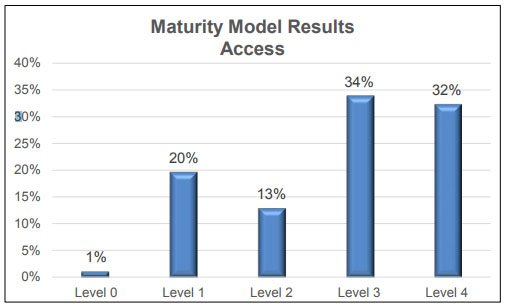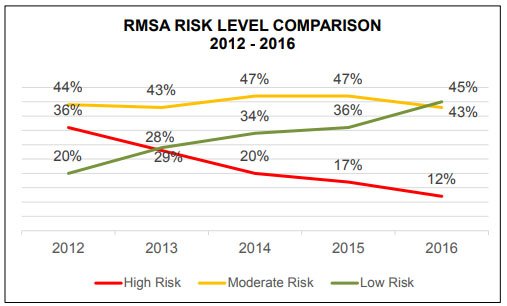

The National Archives also issued a memo clarifying the roles and responsibilities of the Senior Agency Official for Records Management.
Compliance, collaboration and accountability are the themes of the National Archives’ recommendations to agencies for improving how they handle paper —and electronic — trails.
That’s according to NARA’s 2016 Federal Agency Records Management Annual Report.
“The need for records management is increasingly necessary for accountability and to allow agencies to create and retrieve information required to accomplish mission goals,” the annual report stated. “The data received this year by federal agencies shows progress towards improving records management and strengthening electronic records and email management throughout the federal government. Overall records management programs continue to improve through active involvement in information management processes and decisions, enhanced policies and directives, and increased awareness and outreach programs.”
U.S. Archivist David Ferriero said in a statement about the report that email management is one of the “critical milestones to improving records management throughout the federal government.”
“Overall, the great majority of federal agencies reported they have met, or will meet, the major goals and actions outlined in the directive,” Ferriero said. “However, there is still work to be done. The SAORMs in each agency must continue to lead and drive the change that needs to happen if we are to realize the directive’s complete vision of a fully digital and open government.”
This year, NARA’s annual report is comprised of a Senior Agency Official for Records Management (SAORM) Report, a Federal Email Management Report and a Records Management Self-Assessment (RMSA).
The report covers calendar 2016, with a “special focus” on email management.
The SAORM report was based on a series of questions related to meeting a Dec. 31, 2016 target deadline for electronically managing and/or scheduling records, set by the Office of Management and Budget/NARA Managing Government Records Directive [M-12-18].
The SAORM found 79 percent of agencies as of Dec. 31, 2016, are managing all email in electronic format, and 98 percent of agencies said they are “optimistic” about managing all permanent electronic records in electronic format by Dec. 31, 2019.

Some of the agency responses for the SAORM report include the State Department, which said it “does have additional email systems that require further evaluation before we will certify that all email records are managed in an electronic format.”
The Veterans Affairs Department reported the creation of an agency-level Capstone Working group at the Veterans Benefits Administration to help with its SAORM compliance, while the Justice Department created an FBI Records Management Division initiative to manage top secret and sensitive compartmented records.
NARA also issued guidance on the roles and responsibilities of senior agency officials for records management.
“The SAORM acts on behalf of the agency head to ensure the agency efficiently and appropriately complies with all applicable records management statutes, regulations, NARA policy, and OMB policy,” NARA stated. “The SAORM bridges the gap between the agency head and the Agency Records Officer in order to provide strategic direction for the agency’s records management program.”
Responsibilities of the senior agency official include submitting reports to NARA, advocating for their agency’s records management program, and ensuring agency staff receive records management training.
NARA asked agencies to review their email management policies based on an “email maturity model” that ranked their practices and policies on a scale from 0 to 4, with 0 representing the highest risk level and four being the lowest risk level.
Forty-eight percent of agencies reported a Level 3 risk for email policies. This means that among other things, agencies’ email policies are developed, in place and in practice, and stakeholders such as the agency CIO and general counsel are involved in policymaking and decision making around email.

A majority of agencies also reported three and four risk levels for their email systems and their email access.
These risk levels mean that agencies’ main method for email preservation is through electronic collection, and email records are accessed and retrieved “in a timely manner.”


The RMSA is designed to help agencies target areas for improvement by holding up a mirror to their records management compliance.
“Through the RMSA, agencies have become increasingly familiar with how to comply with federal records management regulations and have made improvements to their programs accordingly,” the annual report stated, adding this year is the first time more agencies reported in the low risk category than moderate level.

“We recognize that self-reported data is not conclusive in determining whether agency staff and contractors are properly managing records in every case and every circumstance,” the report stated. “Low risk does not indicate no risk. Scoring in the low risk category does not mean that an agency is free of records management challenges or that they will never experience lapses or failures when managing their records.”
The assessment reports included self-examinations of an agency’s activities, oversight and compliance, records disposition, electronic records, and other requirements that fall under the Managing Government Records Directive.
Some of these additional requirements include following a new GS job series established by the Office of Personnel Management that boosts records management skills, and using cloud services for records management.
“It is imperative that NARA and the federal records management community continue to work together,” the report stated. “In order to do so, it is essential to identify areas of concern and discover solutions. The RMSA is just one compliance centered metric. However, individual and collective results of the RMSA continue to raise the profile of records management and contribute to improved preservation and access to government information.”
Copyright © 2024 Federal News Network. All rights reserved. This website is not intended for users located within the European Economic Area.



